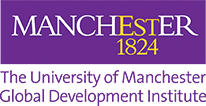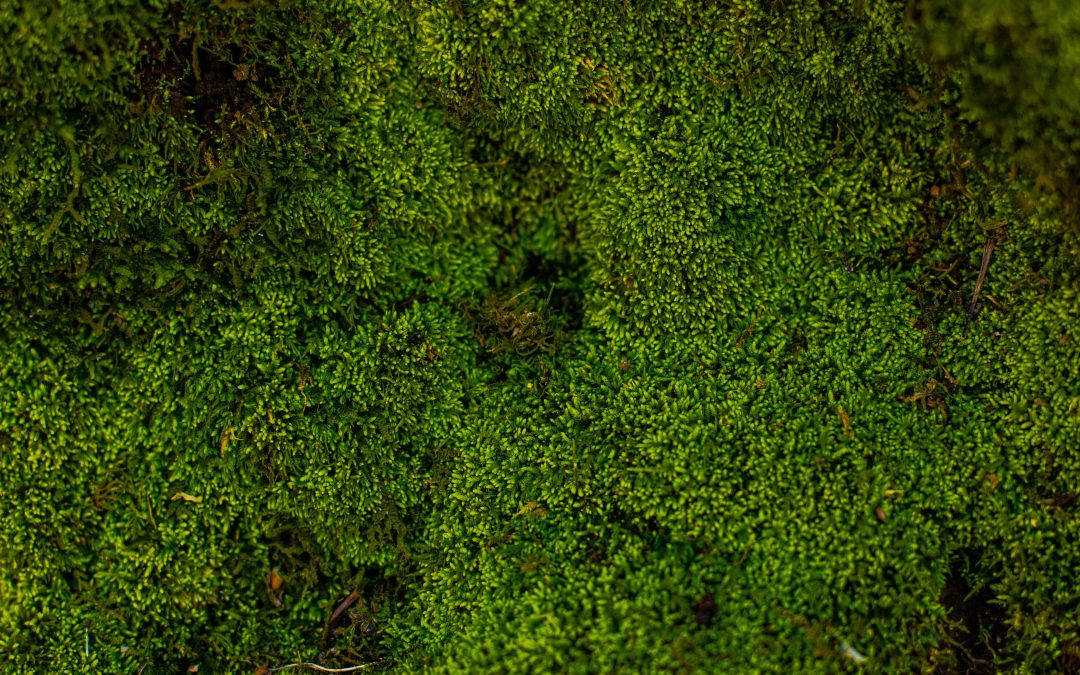By Rabiatu Adamu Saleh, Master’s student in Global Development (Environment and Climate Change)
African cities are dealing with the dual issues of climate change and urban heat islands (UHI), leading to increased interest in innovative nature-based solutions (NbS). Moss preservation and restoration have been suggested as viable techniques for urban cooling and climate mitigation. Due to moss’s inherent capacity to insulate, retain moisture, and promote biodiversity, several scientists propose that preserving current moss ecosystems or introducing moss in urban settings may aid in alleviating heat and diminishing greenhouse gas (GHG) emissions. A thorough evaluation is important to ascertain if moss preservation may serve as a feasible, scalable, and successful option for Africa’s distinct urban environments.
Urban Heat Islands (UHIs) represent metropolitan areas that exhibit markedly elevated temperatures compared to adjacent rural locales. These phenomena arise from human activities and urban infrastructure that modify natural land surfaces and atmospheric conditions. Principal Factors Contributing to Urban Heat Islands (UHIs) encompass the substitution of natural vegetation with concrete, asphalt, and structures that absorb and retain thermal energy; diminished greenery results in reduced shade and evapotranspiration the process by which plants release water vapor, thereby cooling the atmosphere; heat produced by vehicles, factories, air conditioning systems, and other urban energy consumption; and buildings obstructing natural wind patterns, thereby entrapping heat within urban centers.
The effects of urban heat islands (UHIs) include increased temperatures during both day and night. Augmented energy requirements for cooling, heightened health hazards, particularly during heatwaves, and the intensification of air pollution and smog development. Heightened prevalence of heat-related ailments, particularly among at-risk populations such as children, the elderly, and outdoor laborers. Increased energy expenses for cooling impact household finances and municipal resources, while rising temperatures aggravate air pollution and may intensify drought conditions.
African cities encounter distinct susceptibilities to the threats presented by urban heat islands, attributable to a confluence of environmental, socio-economic, and infrastructure elements. Numerous African towns are seeing rapid expansion, frequently marked by informal communities without sufficient infrastructure. These regions generally exhibit restricted green spaces, substandard housing quality, inadequate access to cooling systems, and essential services. In contrast to affluent countries where air conditioning is prevalent, numerous urban inhabitants in Africa have restricted access to cooling systems. This renders populations more vulnerable to heat stress during heatwaves exacerbated by urban heat islands.
Africa’s climate exhibits significant variability; nonetheless, several places are now characterized by elevated temperatures and arid conditions. Urban Heat Islands exacerbate prevailing thermal conditions, heightening health hazards including heat exhaustion, heatstroke, and cardiovascular complications. Low-income communities frequently possess diminished capacity to adjust to elevated temperatures due to inadequate healthcare, restricted access to water and cooling resources, and substandard housing that fails to provide insulation against heat. Numerous African cities are deficient in urban design, green infrastructure, and policies essential for successfully mitigating urban heat islands (UHIs). This covers a deficiency of parks, green roofs, and shaded spaces, as well as inadequate investment in sustainable urban design.
The Climate and Urban Heat Challenges in Africa
Africa has some of the highest global temperatures, with metropolitan regions frequently surpassing 40°C during heatwaves. The accelerated urbanization process intensifies the urban heat island effect, causing cities to have markedly elevated temperatures compared to adjacent rural regions, attributable to concrete surfaces, sparse vegetation, and human-generated heat emissions. These circumstances jeopardize public health, augment energy requirements for cooling, and escalate greenhouse gas emissions. Traditional solutions like air conditioning are energy-intensive and frequently dependent on fossil fuels, which are limited or costly in several African areas. Consequently, nature-based solutions such as green roofs, urban forests, and perhaps moss-based treatments are being investigated as sustainable alternatives that can deliver cooling effects with less environmental impacts.
Moss as a Climate Mitigation and Cooling Agent
Mosses, a category of non-vascular plants, have an extraordinary ability to absorb and retain water, occasionally reaching up to 20 times their dry weight. The water retention capacity of moss enables it to produce a cooling effect via evapotranspiration, a process in which water evaporates from plant surfaces, absorbing heat energy and reducing ambient temperatures. Mosses, besides aiding heat regulation, facilitate carbon sequestration by assimilating ambient CO₂ during photosynthesis, but at a somewhat lower rate than trees. Maintaining current moss ecosystems or introducing moss patches on building facades, walkways, and rooftops might theoretically yield localized cooling and slight climate mitigation advantages.
Potential Benefits of Moss Preservation in Africa
Numerous studies illustrate the effectiveness of moss in lowering surface and air temperatures. Moss lawns used on green roofs can decrease interior temperatures in buildings, hence diminishing energy usage for cooling. In Africa’s arid regions, moss may function as a cost-effective, low-maintenance urban greening solution to mitigate heat stress. Mosses facilitate microhabitats, enhance biodiversity, and ameliorate air quality through pollution filtration. These environmental services contribute indirectly to climate resilience, cost-Effectiveness and less Resource. In contrast to extensive afforestation or sophisticated green infrastructure, moss installation needs less space, water, and maintenance, rendering it appropriate for densely populated African towns with constrained land and financial resources. While not as substantial as forests, mosses do absorb atmospheric CO₂. Maintaining or augmenting moss coverage may enhance local carbon equilibrium, particularly when combined with other Nature-based Solutions (NbS).
Challenges and Limitations
Numerous African urban settings exhibit dry or semi-arid climates marked by low humidity, elevated temperatures, and suboptimal soil quality conditions that are detrimental to moss proliferation and viability. Moss habitats are susceptible to drought, necessitating constant rainfall for optimal growth, a condition often absent in most African towns. Most moss species are suitable to temperate or humid environments. Introducing or preserving moss in arid, elevated-temperature urban environments may necessitate considerable microclimatic alterations or irrigation, possibly negating environmental advantages and amplifying resource requirements.
Existing research on the cooling effects of moss predominantly originates from small-scale experiments conducted in temperate regions. Applying these findings to metropolitan areas in Africa, where environmental conditions significantly vary, is conjectural. The extent to which moss might substantially affect urban temperatures remains ambiguous. Mosses exhibit sensitivity to pollutants, foot traffic, and water availability. Inadequate care or climatic regulation may lead to the demise of moss patches, therefore nullifying the investment. Urban regions in Africa frequently emphasize infrastructure development, sanitation, and affordable housing. Designating space for moss-based interventions may prove difficult, particularly if other green infrastructure alternatives (such as trees and grass) are more entrenched and extensively researched.
Will Preserving Moss Solve the Issue?
Moss preservation and planting may aid in localized cooling and modest climate mitigation; nonetheless, they are improbable to function as independent answers for Africa’s urgent climate and urban heat issues. The restricted ability of mosses to store substantial carbon, together with environmental limitations, indicates that their function should be auxiliary rather than principal.
African cities require comprehensive strategies integrating urban planning, sustainable transportation, renewable energy implementation, and green infrastructure to attain significant climate resilience. Integrating moss with extensive green roofs, urban trees, and water-sensitive urban architecture can enhance cooling benefits.
Nature-Based Solutions in Africa
Studies demonstrate that extensive, robust Nature-based Solutions (NbS) including afforestation, wetland restoration, and urban green spaces provide significant advantages for climate mitigation and adaptation in Africa. These strategies furthermore offer ancillary advantages such as biodiversity preservation, water management, and support for livelihoods. Consequently, although moss may contribute to a comprehensive green infrastructure strategy, depending exclusively on moss conservation as a climate approach is inadequate and perhaps misleading. It is important to emphasize scalable, validated Nature-based Solutions that correspond with local environmental conditions and socio-economic situations. Preserving moss ecosystems and using moss-based solutions in urban development may provide localized cooling advantages in temperate or wet areas.
In Africa’s mostly dry and semi-arid climes, their effectiveness is constrained by environmental limitations, ecological appropriateness, and resource requirements. Moss preservation alone cannot be deemed a holistic climate mitigation or urban cooling solution for African towns. A comprehensive, multisectoral strategy integrating extensive green infrastructure, renewable energy, water management, and sustainable urban design is required. Moss can serve as a beneficial element within this framework, although it must not detract from the necessity for more effective, evidence-based Nature-based Solutions specifically designed for Africa’s distinct climatic and socio-economic contexts.
Top image by Zach Reiner on Unsplash
Note: This article gives the views of the author/academic featured and does not necessarily represent the views of the Global Development Institute as a whole.
Please feel free to use this post under the following Creative Commons license: Attribution-NonCommercial-NoDerivatives 4.0 International (CC BY-NC-ND 4.0). Full information is available here.

